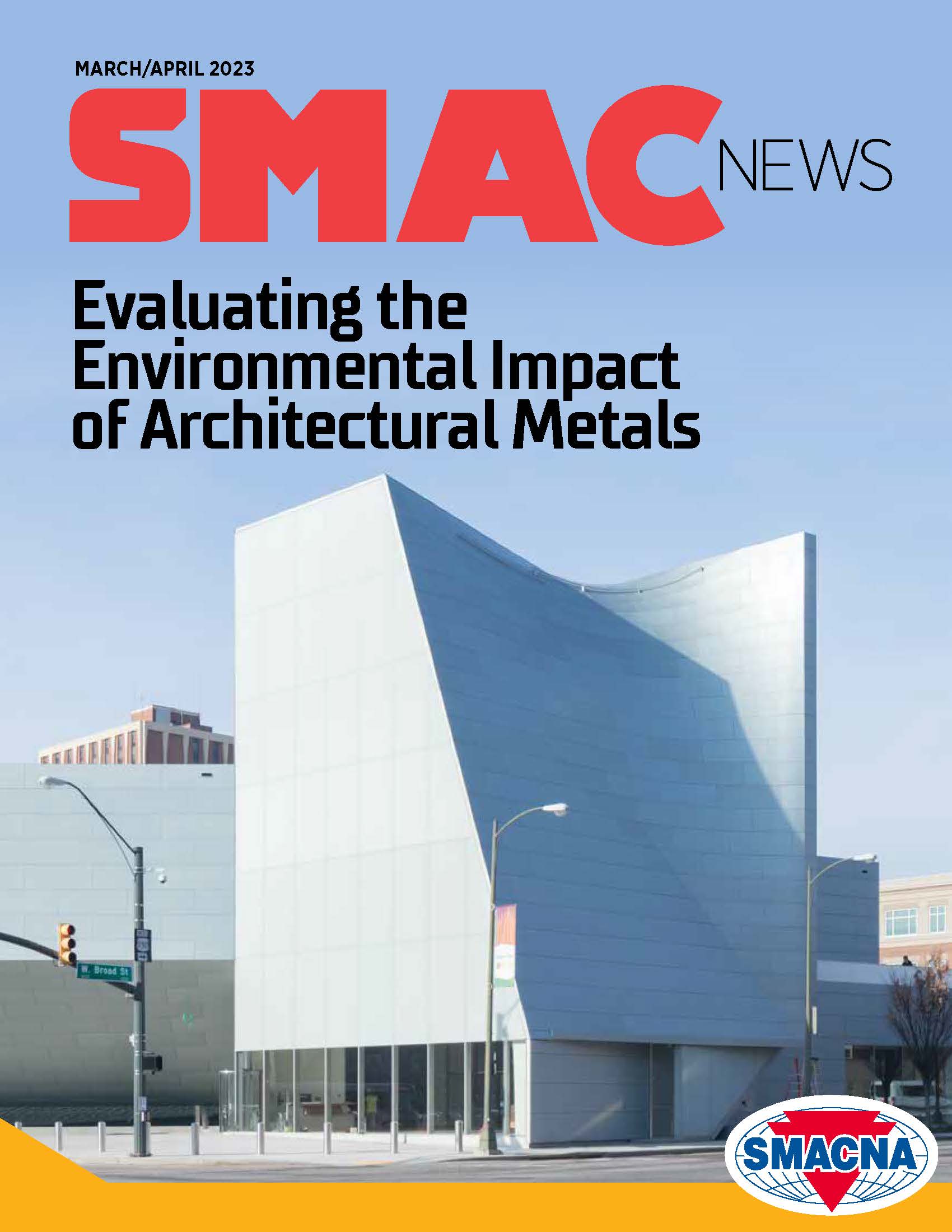Top Contractor Strategies for 2023, Part 2
In the last issue of SMACNews, I presented the first five of Grassi’s Top 10 Contractor Strategies for 2023. Those approaches to purchasing, procurement, prequalification, increased costs and project management are designed to cut through the noise

Ronald J. Eagar
In the last issue of SMACNews, I presented the first five of Grassi’s Top 10 Contractor Strategies for 2023. Those approaches to purchasing, procurement, prequalification, increased costs and project management are designed to cut through the noise of today’s disruptive market and help contractors chart a confident course through this new year.
In this article, we will look at the next five strategies to prevent contractor failure and capitalize on the opportunities we believe will emerge this year.
6. Cybersecurity. While the construction industry may be a late adopter of cyber and information security protocols, it is never too late to promote awareness throughout the organization and foster an environment where it is OK to be skeptical of an email, a request from a new face on the construction site or a new vendor payment process. Ensure that you and your management team know what to do if your company experiences a cyberattack. Have formal policies and procedures to monitor cyber risk, including exercises such as penetration testing, and conduct regular employee training. Leverage a third-party provider to run crisis management and have a designated cyber expert on staff.
7. Cash Flow Forecasting & Operating Budgets. This strategy makes the list every year but is even more critical in today’s economic climate. Cash flow can be the silent killer of any business. By implementing and employing a project-centric cash flow forecast and operating budget process, the contractor can identify where projects (and the company) will experience cash surpluses/deficits and understand how this will impact the entire business. These reports should be fluid, cover a six- to 24-month outlook, and provide your financial leadership with a deeper insight into the company. Ensure you make changes in real time to address potential cash shortfalls and project profitability matters. The power of this strategy is when a constrained period is identified; management will be able to take the necessary steps to identify other sources of cash flow that will carry operations. Your bank or other financial institution will be much more receptive to a forward-looking request than a last-minute one.
8. Financial Reporting & Key Performance Indicators. For the construction contractor, financial reporting on the company-wide and project level must be the foundation of every business decision upper management makes. Real-time and accurate financial reporting will help the contractor identify issues early so he or she can have a chance to remediate them contemporaneously — not only on a specific job but for many jobs and estimates looking forward. Benchmarking your company to construction industry key performance indicators (“KPIs”) can help you identify if a certain metric is above or below the industry average.
9. Income Tax Planning. In an industry where “cash is king,” a proactive income tax deferral strategy becomes an effective means to maintain corporate capital. Based on the tax reporting method of the contractor and the types of contracts a construction company performs under, there are opportunities to employ an accepted income tax reporting method as the basis of a deferral strategy. And even if a contractor is already utilizing an accepted deferral methodology, the strategy could shift to accelerating the recognition of income under today’s favorable rates before they sunset at the end of 2025.
10. Succession & Estate Planning. This is one of the more overlooked topics for many construction company leaders, not because it is unimportant but because it demands extra time. Having a succession plan in place to identify, engage and create success for the next executive is imperative. In an industry where there is a skilled labor shortage, not to mention the Great Resignation, a formalized and practiced succession plan acts as a differentiator for future-facing contractors. In terms of wealth preservation, owners of construction companies still have the opportunity to transfer highly valuable/appreciable assets out of their estates, tax-free. By utilizing the lifetime gift tax exemption, which is $12,920,000 per individual for 2023, an owner can move the ownership of the company to the next generation while controlling the tax implications. This type of planning is not a one-shot deal and does require regular review and updating.
While not an all-inclusive list, these 10 issues are sure to continue to impact the construction contractor in the office and on the job site. Success this year can be achieved through continued dialogue with your people and professionals as the operating landscape continues to evolve, better access to real-time project data (financial and non-financial) that will enable you to make critical job decisions in the moment and an emphasis on conserving corporate capital while being open to new opportunities and the right type of growth. As we move farther away from 2022, a year that saw some reactive decisions, the construction industry has the opportunity to proactively script and plan 2023.
For more information on these strategies and putting them to use for your company, please contact Ronald Eagar, construction partner at Grassi Advisors & Accountants, at reagar@grassicpas.com.
Published: May 16, 2023
IN THIS ISSUE
Big Clients Require Big Partners
JPMorgan Chase & Co.’s global headquarters becomes AABCO’s next commercial HVAC client in NYC.
Bringing Shade to Schools
Intech helps install sheet metal shade structures at California schools.
Evaluating the Environmental Impact of Architectural Metals
Zahner talks about how the Life Cycle Assessment accounts for the environmental impact of metal material from its initial extraction through manufacture and use and on to the end of its designed useful life.
Exploring metal’s role in sustainable architecture
Metals are different from nearly all other materials used in our built environment. Once the useful life has ended, the metal is collected and recycled.
Going to Market
With advertising, 128-year-old Welsch Heating & Cooling Co. isn’t afraid to try new ways to reach their customers — as long as they work.
How to Prepare Your Business for Cyberattacks
Bulletproofing your business against a cyberattack can help protect you from today’s threats.
Metal is a Low Waste, Sustainable Building Material
Sustainability is more than just an industry buzzword at Zahner. It's a daily commitment to preserving and protecting the natural resources we’ve been entrusted with and using them responsibly in the built environment.
Sheet Metal Werks Shifts Field Hours to Shop Hours
The Illinois company saved significant man-hours by planning ahead.
SMACNA at the White House & SMACNA Endorses Bipartisan Bill on Substance Abuse
SMACNA was asked to be part of a policy roundtable on supply chain for highly efficient heat pumps and related decarbonization technologies that are key parts of whole house retrofits.
SMACNA Government & Technical Updates & Engagement Opportunities
The first quarter is always busy at SMACNA. We have lots of association events, our technical department is out in force, labor is starting its bargaining season and the government relations team is focused on many regulatory issues.
The Challenges With Manning Megaprojects
With the pandemic entering a new phase, construction has boomed with what are now widely known as “megaprojects.” Every day, it feels like there’s a new stadium, microprocessor factory or some other massive project getting underway. The demand for
Top Contractor Strategies for 2023, Part 2
In the last issue of SMACNews, I presented the first five of Grassi’s Top 10 Contractor Strategies for 2023. Those approaches to purchasing, procurement, prequalification, increased costs and project management are designed to cut through the noise
Understanding The Notice Requirements In Your CBA
For contractors with collective bargaining agreements (CBAs) expiring in 2023, it is important to remember that most CBAs, including the Standard Form, include an “evergreen” or “automatic renewal” clause.


